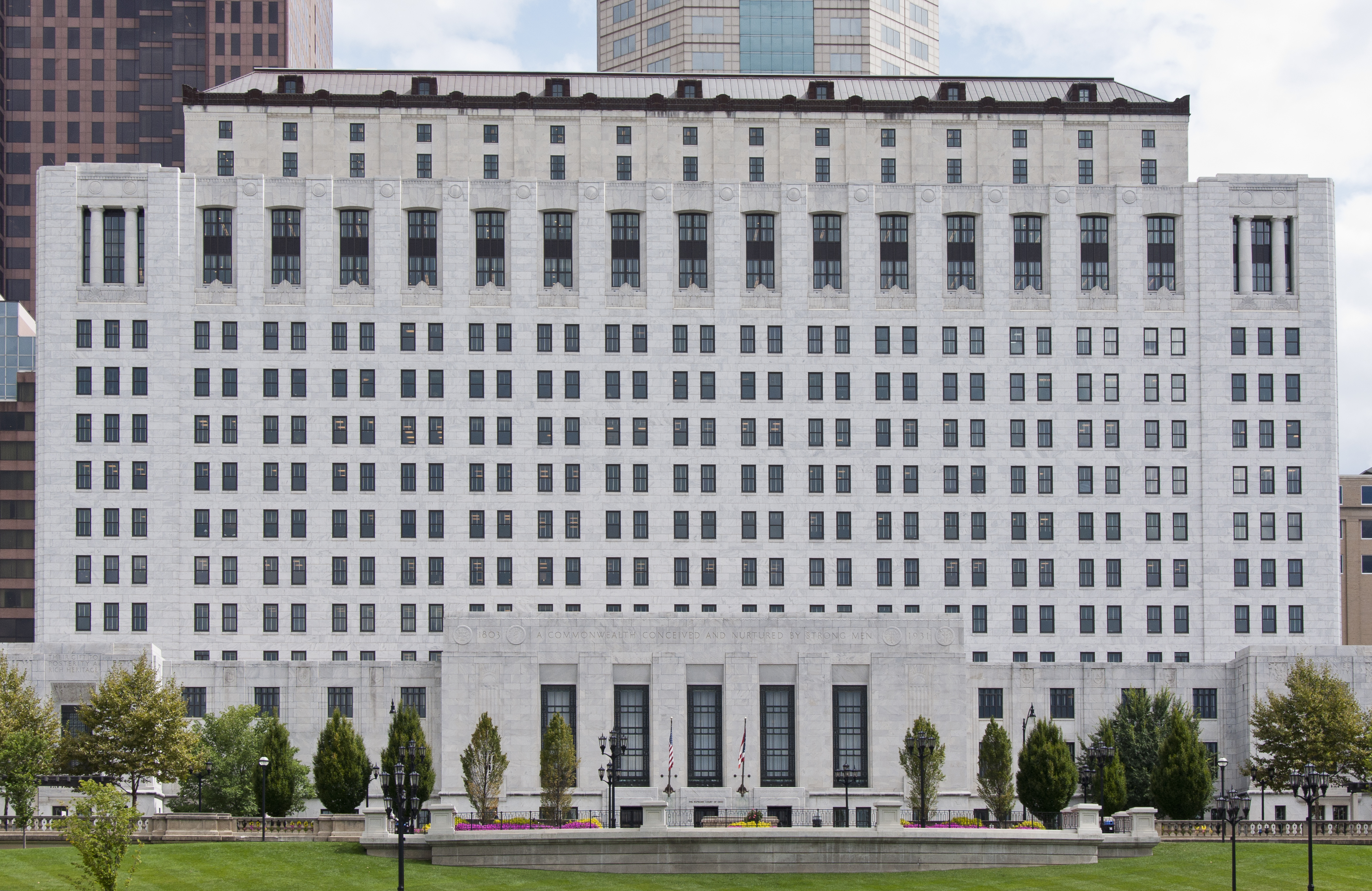|
Henry Brush
Henry Brush (February 12, 1777January 19, 1855) was a lawyer, soldier, legislator and farmer. Early life and legal career Henry Brush was born in Dutchess County, New York in 1777, the youngest son of Lemuel and Mary (Per Lee) Brush. Henry completed preparatory studies and then studied law. He was admitted to the bar in 1803 and commenced practice in Chillicothe, Ohio. For a time, he was in partnership with his brother, Platt Brush. He married Frances and seems to have had several daughters. Another source says he never married. Henry was described by contemporaries as a tall, thin man with a Roman nose and a highly nervous temperament. In December 1805, Henry Brush testified with other lawyers before the Ohio Senate in the impeachment trial of Judge William W. Irvin, a circuit rider who had missed a number of courts held within his circuit. Irwin was removed from office. In December 1807, Henry Brush represented Nathaniel Massie who was contesting the election of Retur ... [...More Info...] [...Related Items...] OR: [Wikipedia] [Google] [Baidu] |
Levi Barber
Levi Barber (October 16, 1777 – April 23, 1833) was a surveyor, court administrator, banker, and legislator who served two non-conservative terms in the United States House Of Representatives in the early 19th century. Early life and career Levi Barber was born in Simsbury, Connecticut, the son of David Barber and Sarah Lawrence. Levi moved to Ohio where he was a surveyor in the employ of the federal government. His name appears on early survey records in what later became Monroe County, Ohio. He also surveyed many other places in Ohio, for example his name is listed as the surveyor in 1802 in Bethel Township in Miami county, Ohio, according to the original source document. On February 15, 1803, in Washington County, Ohio, Levi Barber married Elizabeth Rouse of Massachusetts. They had at least four children: David, Elizabeth, Austin and Levi, Jr. (Levi Barber, Jr., was a presidential elector from Ohio in 1868, casting his ballot for Ulysses S. Grant.) He was appointed ... [...More Info...] [...Related Items...] OR: [Wikipedia] [Google] [Baidu] |
William W
William is a male given name of Germanic origin.Hanks, Hardcastle and Hodges, ''Oxford Dictionary of First Names'', Oxford University Press, 2nd edition, , p. 276. It became very popular in the English language after the Norman conquest of England in 1066,All Things William"Meaning & Origin of the Name"/ref> and remained so throughout the Middle Ages and into the modern era. It is sometimes abbreviated "Wm." Shortened familiar versions in English include Will, Wills, Willy, Willie, Bill, and Billy. A common Irish form is Liam. Scottish diminutives include Wull, Willie or Wullie (as in Oor Wullie or the play ''Douglas''). Female forms are Willa, Willemina, Wilma and Wilhelmina. Etymology William is related to the given name ''Wilhelm'' (cf. Proto-Germanic ᚹᛁᛚᛃᚨᚺᛖᛚᛗᚨᛉ, ''*Wiljahelmaz'' > German ''Wilhelm'' and Old Norse ᚢᛁᛚᛋᛅᚼᛅᛚᛘᛅᛋ, ''Vilhjálmr''). By regular sound changes, the native, inherited English form of the name should b ... [...More Info...] [...Related Items...] OR: [Wikipedia] [Google] [Baidu] |
Marietta, Ohio
Marietta is a city in, and the county seat of, Washington County, Ohio, United States. It is located in southeastern Ohio at the confluence of the Muskingum and Ohio Rivers, northeast of Parkersburg, West Virginia. As of the 2020 census, Marietta has a population of 13,385 people and is the principal city of the Marietta Micropolitan Statistical Area, which includes all of Washington County, and is the second-largest city in the Parkersburg–Marietta–Vienna, WV–OH Combined Statistical Area. Founded in 1788 by pioneers to the Ohio Country, Marietta was the first permanent U.S. settlement in the newly established Northwest Territory, created in 1787, and what would later become the state of Ohio. It is named for Marie Antoinette, then Queen of France, in honor of French aid in the American Revolution. Prior to American settlement, the area was inhabited by various native tribes of the Hopewell tradition, who built the Marietta Earthworks, a complex more than 1,500 years ... [...More Info...] [...Related Items...] OR: [Wikipedia] [Google] [Baidu] |
Freemasonry
Freemasonry or Masonry refers to fraternal organisations that trace their origins to the local guilds of stonemasons that, from the end of the 13th century, regulated the qualifications of stonemasons and their interaction with authorities and clients. Modern Freemasonry broadly consists of two main recognition groups: * Regular Freemasonry insists that a volume of scripture be open in a working lodge, that every member profess belief in a Supreme Being, that no women be admitted, and that the discussion of religion and politics be banned. * Continental Freemasonry consists of the jurisdictions that have removed some, or all, of these restrictions. The basic, local organisational unit of Freemasonry is the Lodge. These private Lodges are usually supervised at the regional level (usually coterminous with a state, province, or national border) by a Grand Lodge or Grand Orient. There is no international, worldwide Grand Lodge that supervises all of Freemasonry; each Grand Lod ... [...More Info...] [...Related Items...] OR: [Wikipedia] [Google] [Baidu] |
William Creighton, Jr
William is a male given name of Germanic languages, Germanic origin.Hanks, Hardcastle and Hodges, ''Oxford Dictionary of First Names'', Oxford University Press, 2nd edition, , p. 276. It became very popular in the English language after the Norman conquest of England in 1066,All Things William"Meaning & Origin of the Name"/ref> and remained so throughout the Middle Ages and into the modern era. It is sometimes abbreviated "Wm." Shortened familiar versions in English include Will (given name), Will, Wills (given name), Wills, Willy, Willie, Bill (given name), Bill, and Billy (name), Billy. A common Irish people, Irish form is Liam. Scottish people, Scottish diminutives include Wull, Willie or Wullie (as in Oor Wullie or the play Douglas (play)#Theme and response, ''Douglas''). Female forms are Willa, Willemina, Wilma (given name), Wilma and Wilhelmina (given name), Wilhelmina. Etymology William is related to the given name ''Wilhelm'' (cf. Proto-Germanic ᚹᛁᛚᛃᚨᚺᛖᛚ� ... [...More Info...] [...Related Items...] OR: [Wikipedia] [Google] [Baidu] |
Marbury V
Marbury may refer to: Places *Marbury, Cheshire, United Kingdom *Marbury, Alabama, United States *Marbury, Maryland, United States Other *Marbury (surname) *Justice Marbury (other) *Marbury Hall (other) Marbury Hall may refer to: * Marbury Hall, Anderton with Marbury Marbury Hall was a country house in Marbury, near Northwich, Cheshire, England. Several houses existed on the site from the 13th century, which formed the seat successively of ... * Marbury School (other) * {{disambig, geo, surname ... [...More Info...] [...Related Items...] OR: [Wikipedia] [Google] [Baidu] |
George Tod (judge)
George Tod (December 11, 1773 – April 11, 1841) was a politician in the U.S. State of Ohio in the Ohio State Senate, and an Ohio Supreme Court Judge 1806-1810, and a soldier who fought in the War of 1812. Early life George Tod was born in Suffield, Connecticut, and graduated from Yale in 1797. He taught school, studied law at Litchfield Law School, and was admitted to the bar in Connecticut. He married Sallie Isaacs in 1797. She was sister in law of Governor Ingersoll. Children Charlotte and Jonathan were born in Connecticut. Upton 1910, p. 80 In 1808, he took on as an apprentice, the young Jesse Root Grant, the future father of Ulysses S. Grant, for four years. The West Tod came to the Western Reserve in 1800. He was appointed Prosecuting Attorney of Trumbull County that year. He was a township clerk 1802-1804. Tod was elected to the Ohio Senate for the third and fourth General Assemblies, 1804-1806. In 1806 the Ohio Legislature appointed him a judge of the Ohio Supreme Court ... [...More Info...] [...Related Items...] OR: [Wikipedia] [Google] [Baidu] |
Samuel Huntington (Ohio Politician)
Samuel Huntington (October 4, 1765 – June 8, 1817) was an American jurist who was the third governor of Ohio from 1808 to 1810. Biography Huntington was born in Coventry in the Colony of Connecticut. He was the nephew (and, later, the adopted son) of Samuel Huntington, the fourth President of the Continental Congress and first President of the United States in Congress Assembled under the Articles of Confederation. Huntington studied at Dartmouth College until the end of his junior year. He then transferred to Yale College, from which he was graduated in 1785. He was admitted to the bar and began practicing law in Connecticut. In 1801, he moved to Ohio with his wife, Hannah, and their young sons, settling in the tiny village of Cleveland. Career After serving as a Trumbull county delegate to the State's first constitutional convention, Huntington was selected as an associate justice of the Ohio Supreme Court and succeeded Return J. Meigs, Jr. as Chief Justice a year later. ... [...More Info...] [...Related Items...] OR: [Wikipedia] [Google] [Baidu] |
Supreme Court Of Ohio
The Ohio Supreme Court, Officially known as The Supreme Court of the State of Ohio is the highest court in the U.S. state of Ohio, with final authority over interpretations of Ohio law and the Ohio Constitution. The court has seven members, a chief justice and six associate justices, who are elected at large by the voters of Ohio for six-year terms. The court has a total of 1,550 other employees. Since 2004, the court has met in the Thomas J. Moyer Ohio Judicial Center (formerly known as the Ohio Departments Building) on the east bank of the Scioto River in Downtown Columbus. Prior to 2004, the court met in the James A. Rhodes State Office Tower and earlier in the Judiciary Annex (now the Senate Building) of the Ohio Statehouse. The Ohio Supreme Court and the rest of the judiciary is established and authorized within Article IV of the Ohio Constitution. Justices All the seats on the court are elected at large by the voters of Ohio. Every two years, two of the associate ... [...More Info...] [...Related Items...] OR: [Wikipedia] [Google] [Baidu] |
Ohio House Of Representatives
The Ohio House of Representatives is the lower house of the Ohio General Assembly, the state legislature of the U.S. state of Ohio; the other house of the bicameral legislature being the Ohio Senate. The House of Representatives first met in Chillicothe on March 3, 1803, under the later superseded state constitution of that year. In 1816, the capital was moved to Columbus, where it is located today. Members are limited to four successive two-year elected terms (terms are considered successive if they are separated by less than four years). Time served by appointment to fill out another representative's uncompleted term does not count against the term limit. There are 99 members in the house, elected from single-member districts. Every even-numbered year, all the seats are up for re-election. Composition Leadership Members of the 134th House of Representatives ↑: Member was originally appointed to the seat. Officials Speaker of the House The Speaker of the House of ... [...More Info...] [...Related Items...] OR: [Wikipedia] [Google] [Baidu] |
Ohio
Ohio () is a state in the Midwestern region of the United States. Of the fifty U.S. states, it is the 34th-largest by area, and with a population of nearly 11.8 million, is the seventh-most populous and tenth-most densely populated. The state's capital and largest city is Columbus, with the Columbus metro area, Greater Cincinnati, and Greater Cleveland being the largest metropolitan areas. Ohio is bordered by Lake Erie to the north, Pennsylvania to the east, West Virginia to the southeast, Kentucky to the southwest, Indiana to the west, and Michigan to the northwest. Ohio is historically known as the "Buckeye State" after its Ohio buckeye trees, and Ohioans are also known as "Buckeyes". Its state flag is the only non-rectangular flag of all the U.S. states. Ohio takes its name from the Ohio River, which in turn originated from the Seneca word ''ohiːyo'', meaning "good river", "great river", or "large creek". The state arose from the lands west of the Appalachian Mountai ... [...More Info...] [...Related Items...] OR: [Wikipedia] [Google] [Baidu] |


